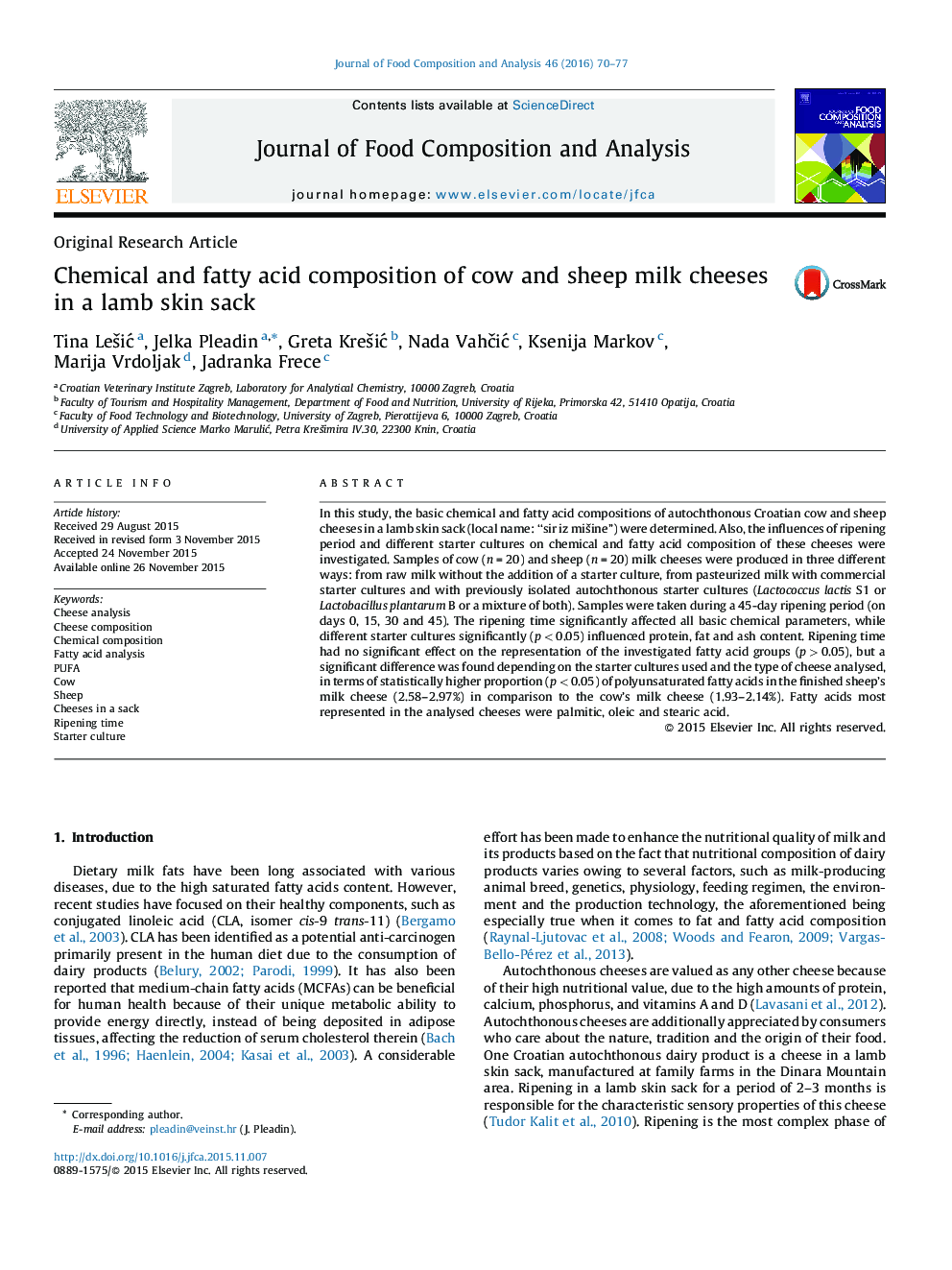| کد مقاله | کد نشریه | سال انتشار | مقاله انگلیسی | نسخه تمام متن |
|---|---|---|---|---|
| 1218109 | 1494496 | 2016 | 8 صفحه PDF | دانلود رایگان |
• Basic chemical and fatty acid compositions of traditional cheeses were determined.
• Differences between cow and sheep cheese were found in terms of fatty acid composition.
• Starter cultures significantly influenced the chemical and fatty acid composition.
• Commercial and previously isolated autochthonous starter cultures were used.
• The 45-day ripening time significantly affected the chemical composition.
In this study, the basic chemical and fatty acid compositions of autochthonous Croatian cow and sheep cheeses in a lamb skin sack (local name: “sir iz mišine”) were determined. Also, the influences of ripening period and different starter cultures on chemical and fatty acid composition of these cheeses were investigated. Samples of cow (n = 20) and sheep (n = 20) milk cheeses were produced in three different ways: from raw milk without the addition of a starter culture, from pasteurized milk with commercial starter cultures and with previously isolated autochthonous starter cultures (Lactococcus lactis S1 or Lactobacillus plantarum B or a mixture of both). Samples were taken during a 45-day ripening period (on days 0, 15, 30 and 45). The ripening time significantly affected all basic chemical parameters, while different starter cultures significantly (p < 0.05) influenced protein, fat and ash content. Ripening time had no significant effect on the representation of the investigated fatty acid groups (p > 0.05), but a significant difference was found depending on the starter cultures used and the type of cheese analysed, in terms of statistically higher proportion (p < 0.05) of polyunsaturated fatty acids in the finished sheep's milk cheese (2.58–2.97%) in comparison to the cow's milk cheese (1.93–2.14%). Fatty acids most represented in the analysed cheeses were palmitic, oleic and stearic acid.
Journal: Journal of Food Composition and Analysis - Volume 46, March 2016, Pages 70–77
